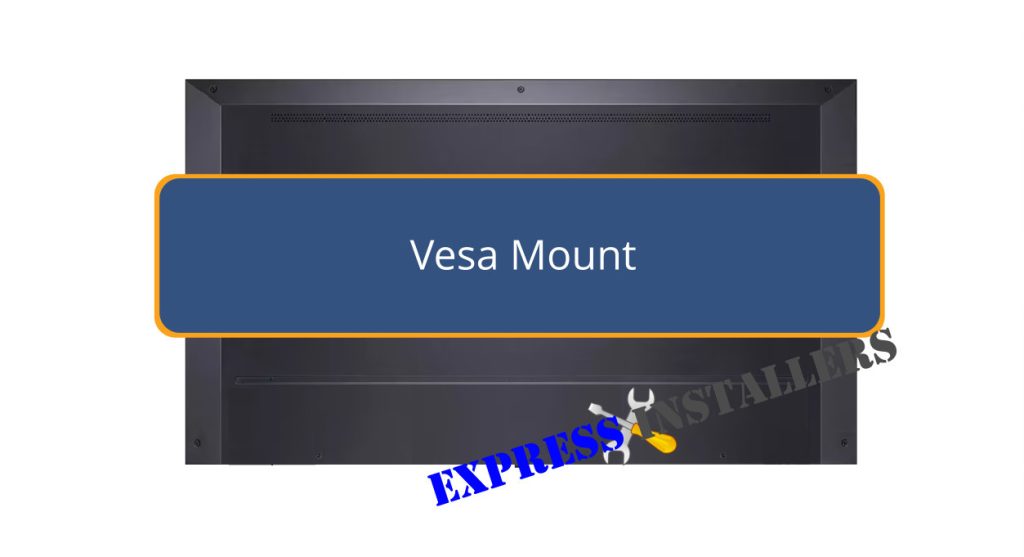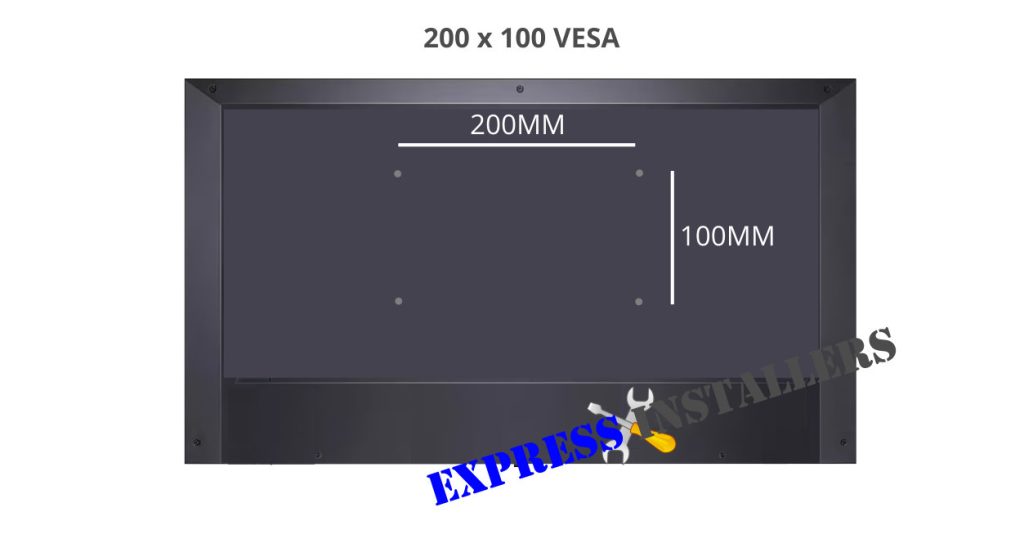
A VESA mount is a standardised interface established by the Video Electronics Standards Association for securely attaching displays to various support structures.
These mounts are designed with specific dimensions and patterns to guarantee compatibility across monitors, promoting stability and ergonomic benefits.
When selecting a mount, verify your monitor’s VESA compatibility and weight restrictions to establish a secure setup.
Proper installation involves attaching the mount to a sturdy surface and effectively managing cables. VESA brackets can enhance productivity by allowing flexible adjustments and optimising workspace ergonomics.
Explore more details to secure a perfect setup.
Understanding VESA standards is essential for guaranteeing proper mounting and stability of displays and monitor stands.
Established by the Video Electronics Standards Association, it defines the dimensions and placement of attachment interfaces on displays for mounting and desk mount purposes.
These standards have evolved to accommodate various TV sizes and weights, significantly impacting the industry by providing a uniform framework for manufacturers and consumers.
One critical aspect of VESA is the center-positioned hole measurements, designed to reduce torquing forces on the mount and ensure stability.
This design consideration is vital for maintaining the integrity of the display and the mounting structure. Common variants such as VESA MIS-D, MIS-E, and MIS-F categorise these standards, reflecting their suitability for different display types and sizes.
Despite their importance, a common misconception surrounds a VESA TV wall mount. One such misconception is that any mount can be used with any display, which is not the case.
Ensuring VESA compliance is crucial for a secure and ergonomic setup, as non-compliant mounts can lead to instability and potential damage.
Adhering to mounting tips, such as verifying compatibility and following installation guidelines, guarantees a reliable and safe display mounting experience.

Selecting an appropriate VESA mount requires careful consideration of various factors, such as monitor size, weight, and intended usage.
The first step is to verify the monitor’s VESA compatibility by checking its VESA mount sizes, typically specified in millimetres.
Common sizes for smaller monitors include 75×75 mm and 100×100 mm, while larger screens may require 200×200 mm or larger mounting patterns for TVs above 65 and 70 Inch TVs.
Equally important are the mounts’ weight restrictions. Confirm the mount can support the weight of your monitor.
Exceeding the weight limit can lead to instability and potential damage. VESA mounts are classified into MIS-D, MIS-E, and MIS-F variants, each catering to specific size and weight requirements.
Additionally, consider any extra features you might need, such as tilt, swivel, and rotation capabilities. These features can significantly enhance the ergonomic setup of your workspace, whether at home, in the office, or for gaming.
VESA Mount Size | Maximum Weight (lbs) | Suitable For |
75×75 mm | 18 | Small monitors |
100×100 mm | 30 | Medium-sized monitors |
200×200 mm | 50 | Large monitors |
Ensuring the VESA mount meets your specific requirements is essential for a secure and efficient setup.
Ensuring your monitor is VESA compatible is the essential first step in the installation process. Confirm the VESA pattern on the back of your monitor, which typically comes in sizes like 100×100 or 200×200.
Once compatibility is confirmed, select the appropriate VESA mount size.
The mounting process begins by securely attaching the VESA mount to the monitor.
Utilise the correct screws and spacers provided with the mount to avoid common mistakes such as improper fit or loosening over time.
Typically m8, m6 and m4 screws are needed depending on the manufacturer and screen size. Make sure each screw is tightened adequately to prevent instability.
Next, mount the plate to a sturdy surface like a wall or desk. This step is crucial for achieving optimal stability and safety.
During this phase, careful attention to cable management is essential. Routing and securing cables will enhance the aesthetic appeal and prevent potential damage or interference with the monitor’s movement.
TV installation includes adjusting the monitor on the VESA mount to reach the desired height and angle, as well as cable management.
This ensures comfortable viewing and reduces strain. Avoid over-tightening screws, which can strip threads or damage the monitor. Following these guidelines will result in a secure and efficient VESA mount installation.
VESA mounts offer significant ergonomic advantages by allowing flexible adjustments to monitor positioning.
The VESA mount flexibility facilitates ideal screen alignment, reducing strain on the neck and eyes, which is essential in maintaining a healthy workspace. Users can customise monitor height, tilt, and rotation, promoting a comfortable and productive environment.
One of the primary advantages of VESA mounts is its standardised hole patterns, which guarantee seamless compatibility with a wide range of monitors.
This standardisation also contributes to the effectiveness of VESA mounts, eliminating the need for specialised mounting solutions and reducing overall installation expenses.
VESA mount customisation is another significant benefit, allowing users to arrange multiple monitors in various configurations to suit individual preferences and tasks.
Understanding VESA mount compatibility is crucial for ensuring your monitor attaches securely and functions efficiently.
The Video Electronics Standards Association (VESA) sets specific standards defining mounting techniques and compatibility requirements for monitors and mounts.
Using a Mount Finder tool can simplify determining whether your monitor is VESA compliant and ensure a seamless installation.
Additionally, the Flat Display Mounting Interface (FDMI) standards, including MIS-D, MIS-E, and MIS-F, are essential to identify. These standards specify the mounting hole patterns and sizes, ensuring a match between the monitor and the mount.
A diverse array of VESA mount options caters to various needs, providing solutions for medical environments, retail kiosks, and secure display setups.
These VESA mount stands are medical rolling carts, kiosks, AV capsule stands, and rotating security stands. Each mount type boasts innovative designs that enhance user experience and functionality and adhere to the VESA interface standard.
For instance, Medical Rolling Carts offer mobility and flexibility, essential in healthcare settings. At the same time, kiosks and AV capsule stands support brandable displays necessary for retail and promotional use.
The customisation benefits of VESA mount options are remarkable. Features like Tilt and Swivel arms allow a tailored setup, accommodating various configurations and preferences.
Guaranteeing peak performance and longevity of VESA mount stands requires attention to potential issues that may arise during installation or regular use.
A critical aspect of VESA mount stability is confirming the tightness of all screws. Loose screws or improper alignment can lead to an insecure attachment, jeopardising both the monitor and the mount.
Common VESA mount problems often stem from compatibility issues. Verifying that the VESA pattern on your monitor matches the mount’s VESA pattern is crucial.
This ensures proper fitting and prevents mounting complications. Also, to avoid structural damage or failure, please provide the monitor’s weight so it does not exceed the mount’s specified weight capacity.
If the mounting patterns are non-standard, consider using spacers or VESA plate adapters to achieve a secure fit. These components can bridge the gap between incompatible patterns, ensuring a stable configuration.
Often, VESA mounts greatly enhance workspace ergonomics by enabling precise adjustments in monitor height, tilt, and rotation. These adjustments are crucial for reducing neck and eye strain by positioning monitors at eye level.
The VESA bracket can also accommodate various monitor sizes and weights, providing workspace flexibility and comfort.
The advantages of using a VESA are manifold. It facilitates an ideal viewing experience, contributing significantly to productivity benefits.
Users can easily switch between landscape and portrait orientations, promoting a seamless workflow and improving task efficiency.
To make the most out of VESA mounts, consider the following tips:
This refers to the standardised interface defined by VESA for attaching displays. It offers mounting benefits such as easy installation, flexibility, and ergonomic advantages, ensuring secure and efficient monitor or TV placement.
To determine if your TV has mounting holes, inspect the back panel for a square or rectangular pattern of four screw holes. Measure the horizontal and vertical distances to identify the VESA sizes.
Not all TVs are VESA compatible. However, universal adapters and various mounting options are available to accommodate mounting interface standards, ensuring they can be securely mounted despite differing mounting hole measurements and specifications.
Not all monitors are VESA compatible. Some require adapter plates or mounting brackets to attach to standard mounts. Consider the monitor’s weight, screw size, and FDMI MIS specifications when selecting appropriate mounting solutions.
To summarise, VESA mounts offer significant advantages in compatibility, ergonomic benefits, and space efficiency.
Understanding the standards and selecting an appropriate mount is vital to optimising installation.
Proper installation and troubleshooting can mitigate potential issues, ensuring a stable and secure setup.
The variety of mount options caters to diverse needs, making it a versatile solution for enhancing personal and professional environments.
Mon-Fri: 24 Hours
Sat: 24 Hours
Sun: 24 Hours